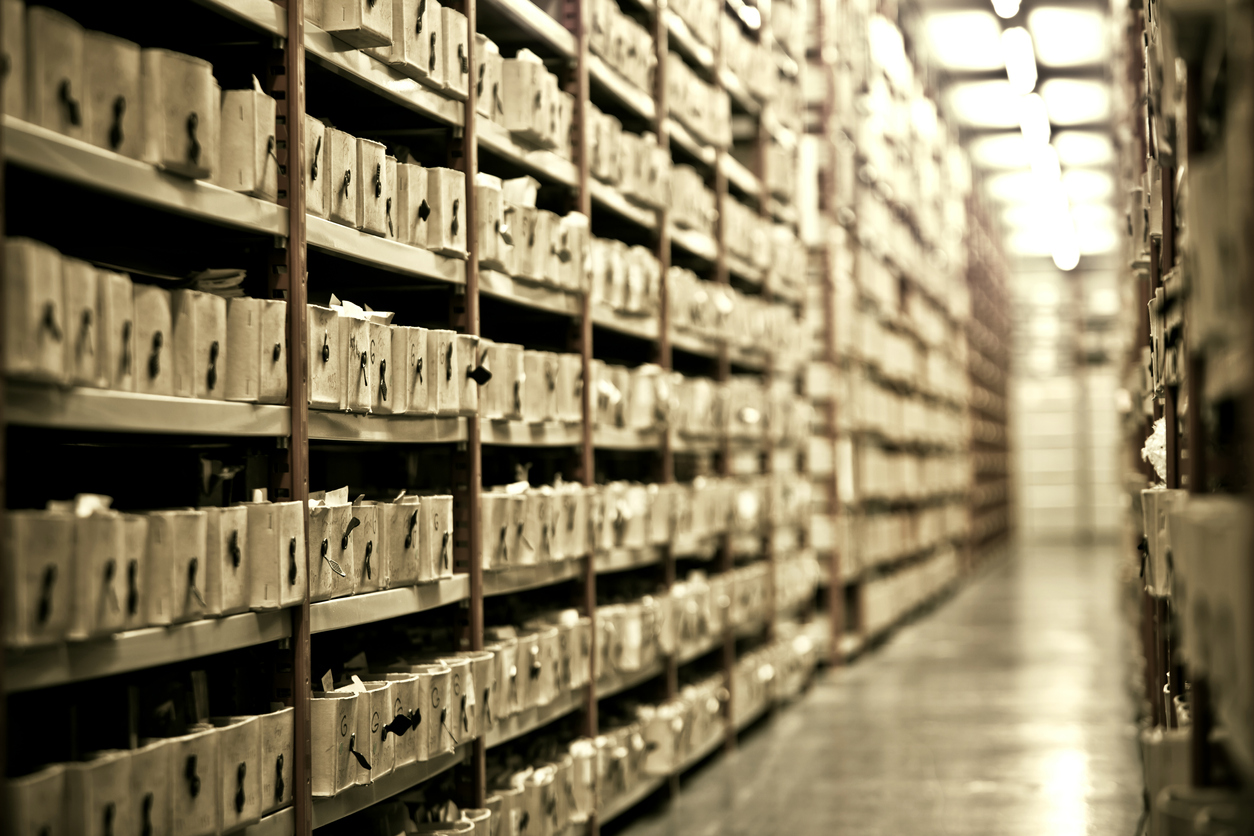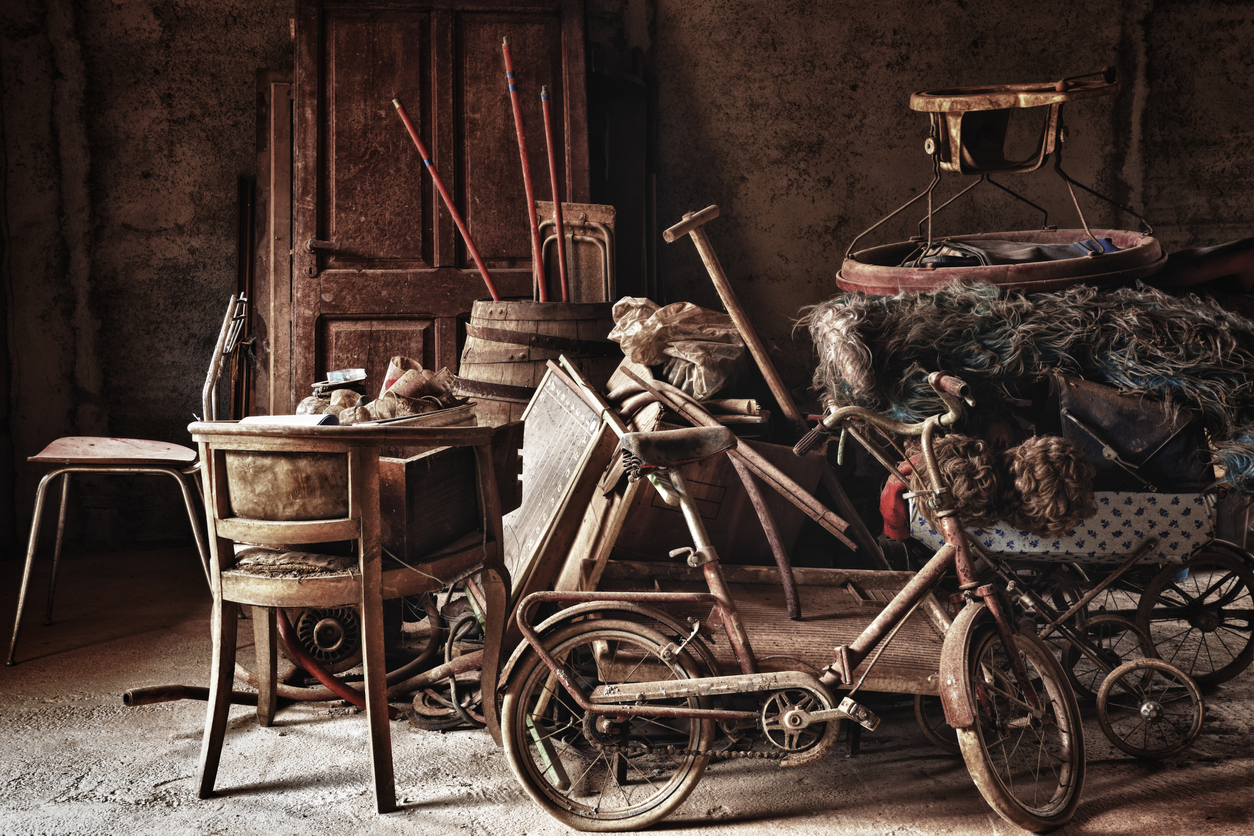Are you one of the lucky few to still be storing microfilm? Maybe you’re not personally involved in it, but you have a third party handling the storage for you. Either way, with so much information contained on microfiche and microfilm records, it’s important to know how your material is being stored and maintained so that you don’t end up as one of the unfortunates that lost dozens, or even hundreds, of records because it wasn’t done right.
In this article we’ll describe some details of microfilm storage that give your documents the best chance of surviving the years ahead – if properly stored and maintained, microfilm has a shelf life of up to 500 years!
What Is Microfilm?
Microfilm in roll form is a length of film containing a sequential series of images, or frames. Roll film typically comes in only two widths: 16mm (millimeters), which is about ¾ of an inch wide, and 35mm, about 1 ½ inches wide. Microfiche, from French for small card, is a flat sheet that contains images in rows and columns. The standard size is 105mm x 148mm (about 4 inches x 6 inches).
Microfilm is the popular term that’s traditionally used for all formats of microform, including microfilm, microfiche, and aperture cards.
Microfilm and microfiche are utilized to keep information, such as financial documents, student records, engineering drawings, land records, newspapers and other historical documents, in a storage-friendly and long-lasting preservation medium. Both microfiche or microfilm provide a storage solution that takes up less space than paper records and provides a long term repository for your data, as long as it’s maintained properly. While there is a more contemporary option to store your records (digital scanning and conversion), it’s important to know how to correctly store your microfilm to ensure it doesn’t become damaged over time.
Fun fact: microfilm was first practically employed by the French in the Franco-Prussian War in 1870 to send messages by carrier pigeon over enemy lines. What a way to communicate!
If you’re not sure what types of microfilm you have, visit our web page “What Kind of Microfilm Do I Have?” to find out!
How To Store Microfilm
If you’re storing microfilm or microfiche it’s important to know the differences between the two and to take the proper precautions so the film images retain their integrity over time. An off-site climate-controlled environment can provide a good option for physical storage, as your records need to be sealed from the elements and not exposed to light or harsh temperatures. While an off-site storage facility can save you space and help to keep your microfilm safe, you should also make sure the site you choose implements proper security measures and that you know how long it will take to access your records, as well as what is required to fulfill a record request. If you choose to store your microfilm on-site instead, here is what you need to know, summarized from Kodak’s “10 Ways to Maintain Your Microfilm Records:”
- Pack your microfilm tightly to prevent oxidation.
- Store in a temperature-controlled environment. Temperature should not exceed 21°C (70°F).
- Control moisture and keep humidity below 50%.
- Store your records in a dark place and limit exposure to light.
- Keep your storage facility clean.
- Don’t paint rooms without removing your microfilm first. Allow three months for paint to dry before replacing film in storage.
- Don’t store your microfilm in wooden cabinets for the long-term.
- Handle your microfilm carefully, and use gloves as much as is logical to reduce oil residue transferring from your hands to the film.
- Place acid-detection strips (A-D strips) next to your microfilm to catch increases in acetic acid as soon as possible.
- If film shows signs of degradation, determine which form of decay is happening and separate and quarantine film that is affected. This will help mitigate the possibility of other records contracting the issue.
Sure, it seems like a lot of work to keep your microfilm properly maintained, because it is! There’s a reason that a well-stored microfilm reel or microfiche sheet has a shelf life of 500 years, but it takes more than just putting your records in a shoebox and throwing them in the closet.
If your storage area looks like this, that’s probably not good for your microfilm!
If you’re wondering what happens to microfilm that isn’t properly maintained, read our article about microfilm deterioration to see some examples of decayed and destroyed film. It’s not a pretty sight!
If you don’t think that your microfilm is stored properly, or you just don’t want to have to worry about it, there is another way: scanning and conversion to digital.
I Love Having Microfilm, And I Want More Of It
That’s a bold statement! Lucky for you, we still provide microfilming services and are happy to be a part of your physical copy preservation efforts. If microfilming is something that you want as a part of your ongoing document management strategy, we have a couple of solutions that could fit your style.
The first is straightforward: microfilming your paper documents. This is the classic way to create microfilm, and probably what you think of when you hear “microfilming.” Using an overhead “planetary” camera, we take photos of your documents and create an original negative microfilm copy. Positive duplicates can also be provided, if you think you’ll need a backup copy or one that will be in public use. This is the option you’ll use if you want newspapers, engineering drawings, oversized books, and other large format documents microfilmed. As you may have noticed, most of the records described relate to government agencies such as a library, building department, recorder’s office, etc.
The second option is a little more fancy: using our Microfilm Digital Archive application, a copy of microfilm will actually be created from digital images. This solution is great because if you decide to work with us and use Microfilm Digital Archive, we can scan your hard copy records first and then create the microfilm, giving you both versions of the documents (digital and hard copy). Additionally, the technology provides you with a process to upload digital images and create microfilm. So if you’re scanning your paper documents internally, all you need to do is send the digital images to us and we can create microfilm for you!
One note about Microfilm Digital Archive is that it was originally created with land records in mind (think County Clerks, Assessors, and Recorders). Using our app, users upload their scanned records and the MDA process automatically checks for discrepancies in the imported documents. Once the user decides that the information contained on the digital roll is correct, a press of a button locks in the digital copy as a permanent record and also signals us to create a physical microfilm roll for our customer. This way, both a digital and physical copy of microfilm are available for access or as a backup!
I Don’t Want To Store My Microfilm Anymore. What Are My Options?
One of our favorite methods: microfilm and microfiche digitization!
If you’re still accessing your microfilm by using the physical copy and putting it on a reader/printer machine, it might be time to get your film scanned. Even if you’re not getting into the microfilm often, digitizing is a great way to have a backup copy of your content in case disaster strikes.
Just to be transparent (so you don’t think we’re pulling a bait and switcheroo!) we want to make something clear: digitizing is not necessarily a replacement for storage. What this means is that even though you may convert your film and fiche records to a digital format, that doesn’t magically get rid of the physical copy. Once you have the electronic copy of your content, you may want to put it back into storage as a hard copy backup; you may even be required to keep a copy – this isn’t a joke; many agencies are required to keep an eye-readable hard copy of their content, regardless if it’s already in digital. And in many cases, microfilm is still the most cost- and space-efficient means of doing so!
Another option after digital conversion is to dispose of your microfilm records. This gets a little tricky, because you may have to involve a company that specializes in disposal – other times you may be able to have the documents shredded. We’re not expert disposal technicians, so you’ll have to do a little research into this, but know that there are ways to eventually dispose of your microfilm.
Next Steps
Reach out to us today! Click the “Get Your Quote” button below, fill out the form, and we’ll quickly reply to you to discuss your project.
Further Reading
Below are some more articles that can help you as you continue to learn about microfilm and digitization:
“How Much Does Microfilm Scanning Cost?” describes the 9 factors that will affect the price you pay for microfilm scanning. If you’re starting to research microfilm digitization, this is a great place to start and get a ballpark budget idea.
“Microfilm Deterioration: How To Identify It And How To Preserve Your Content” describes various ways that your microfilm and microfiche records can show signs of wear and decay, and what you can do about it. Don’t wait until it’s too late to preserve your content! Scanning now may be the best solution to preserve your data.
“Walk Backward To Sprint Forward: Reverse Engineer Your Project” will give you a sense of time management for your project. Is there something driving your need for film scanning? Do you have a deadline to meet? Start there and work backward to figure out what you need to do and by when.


